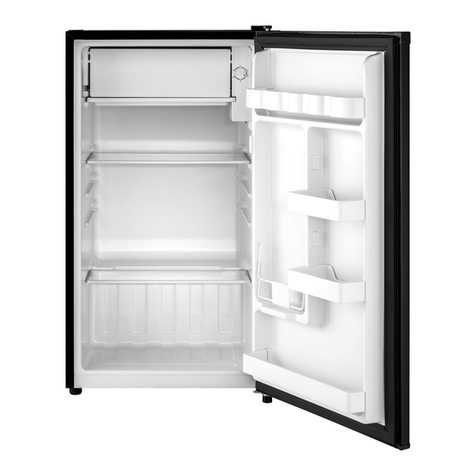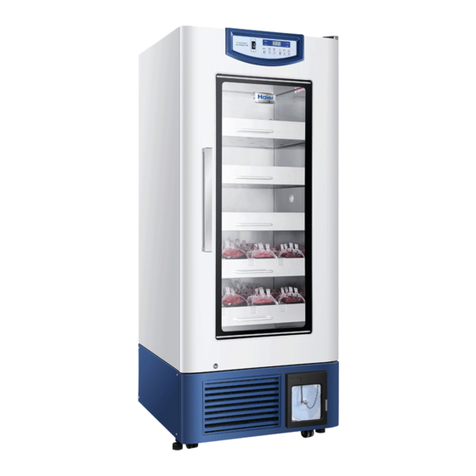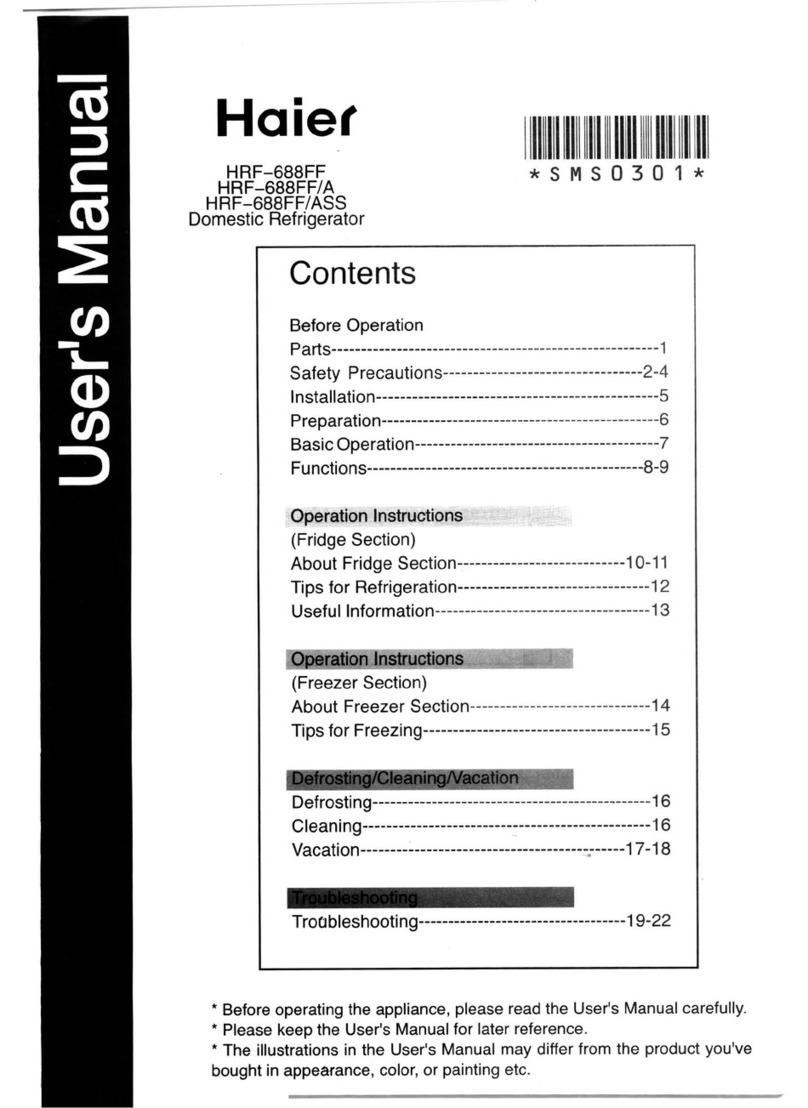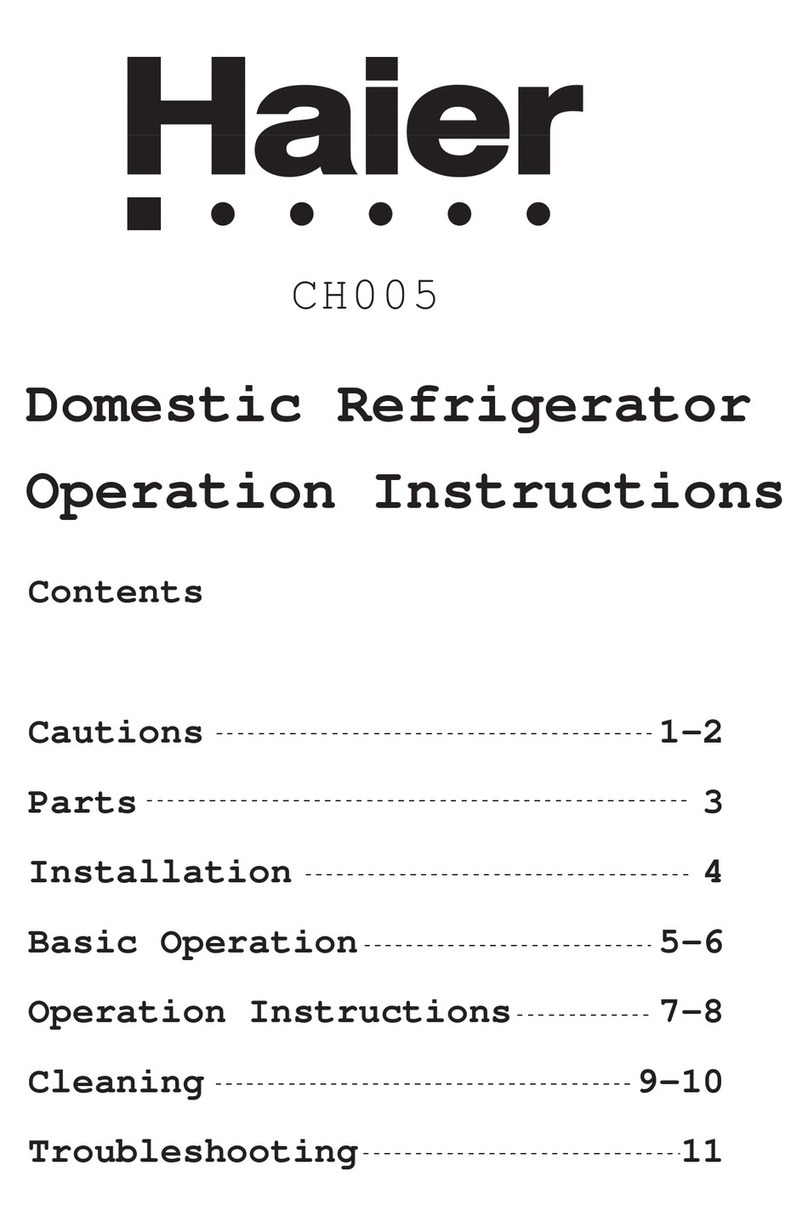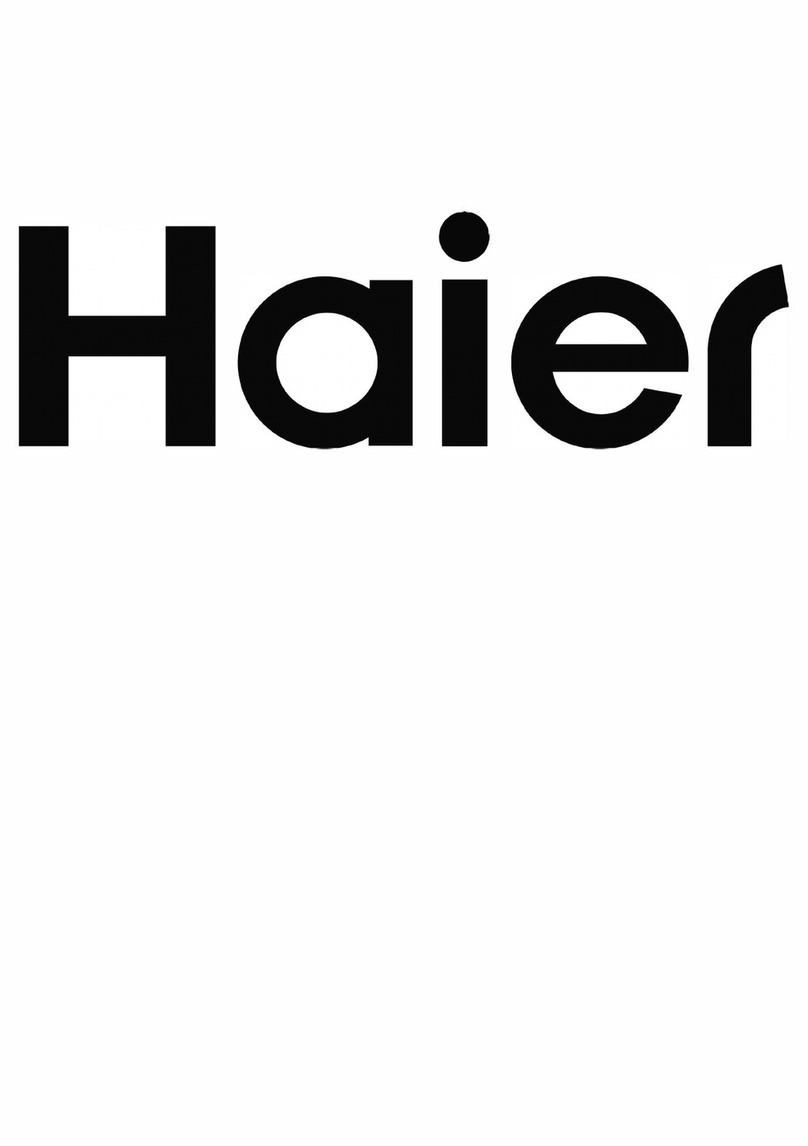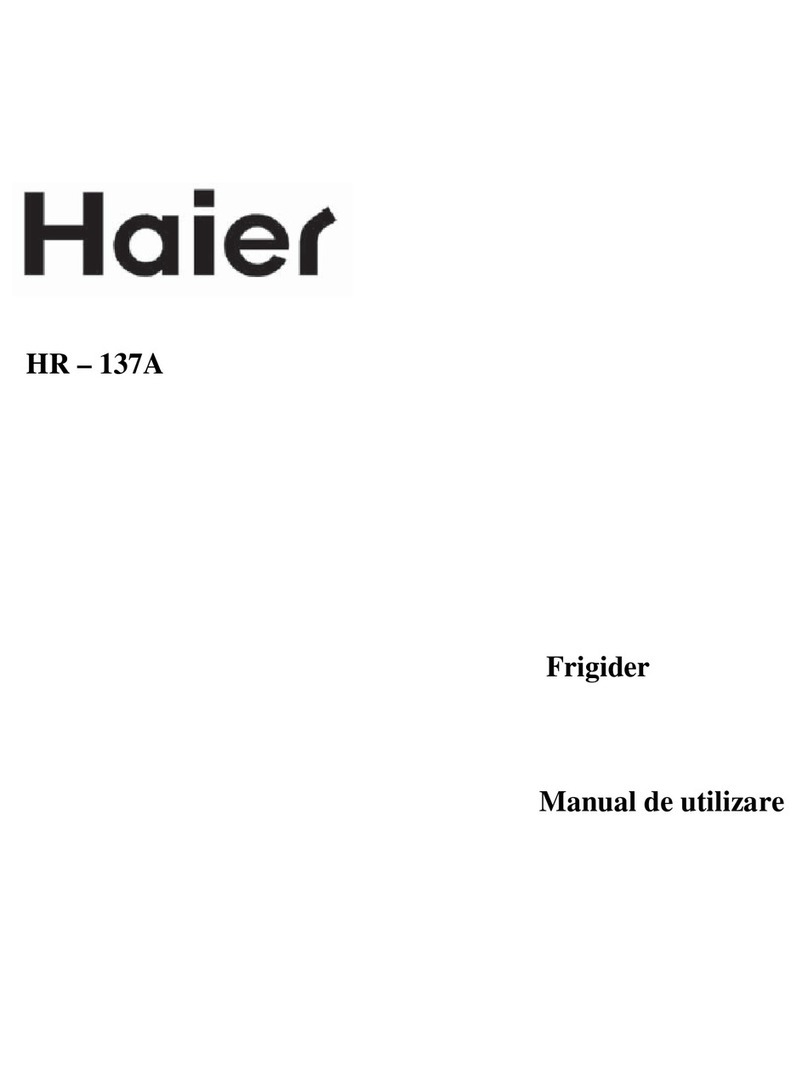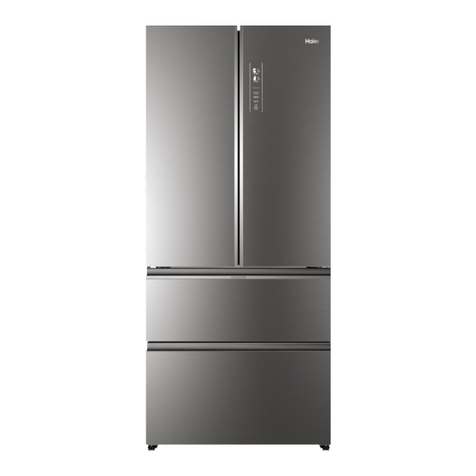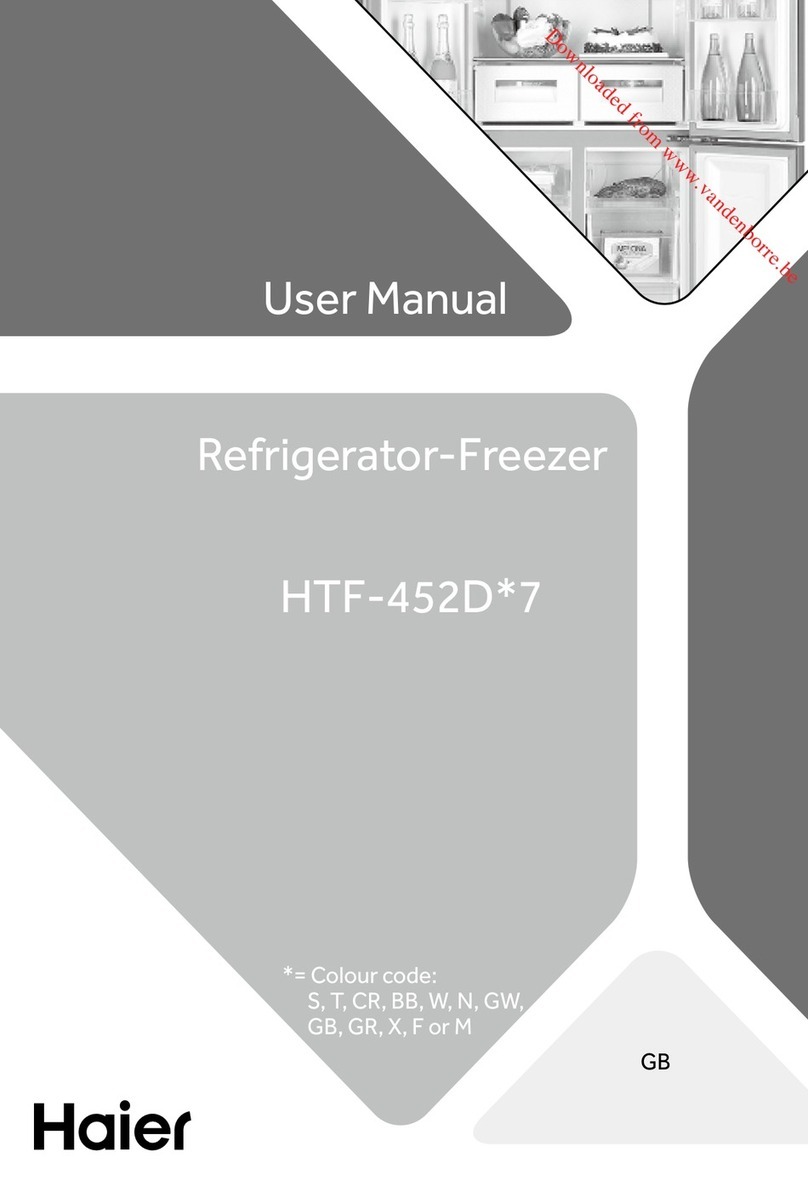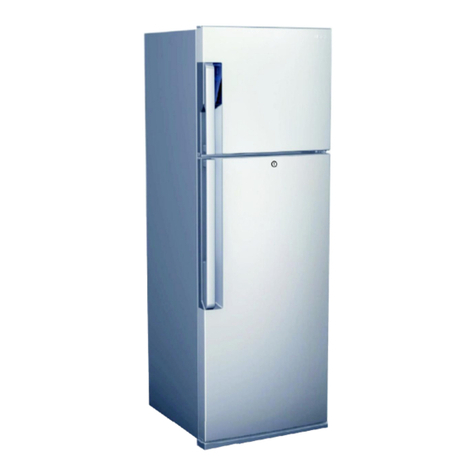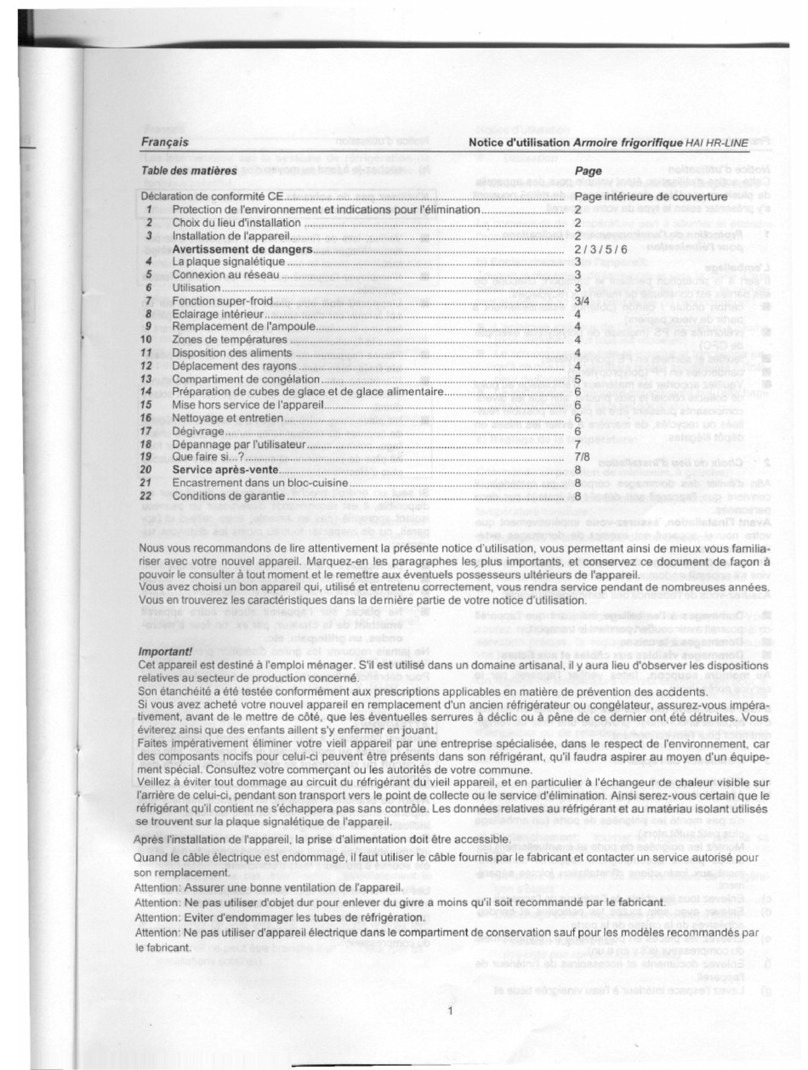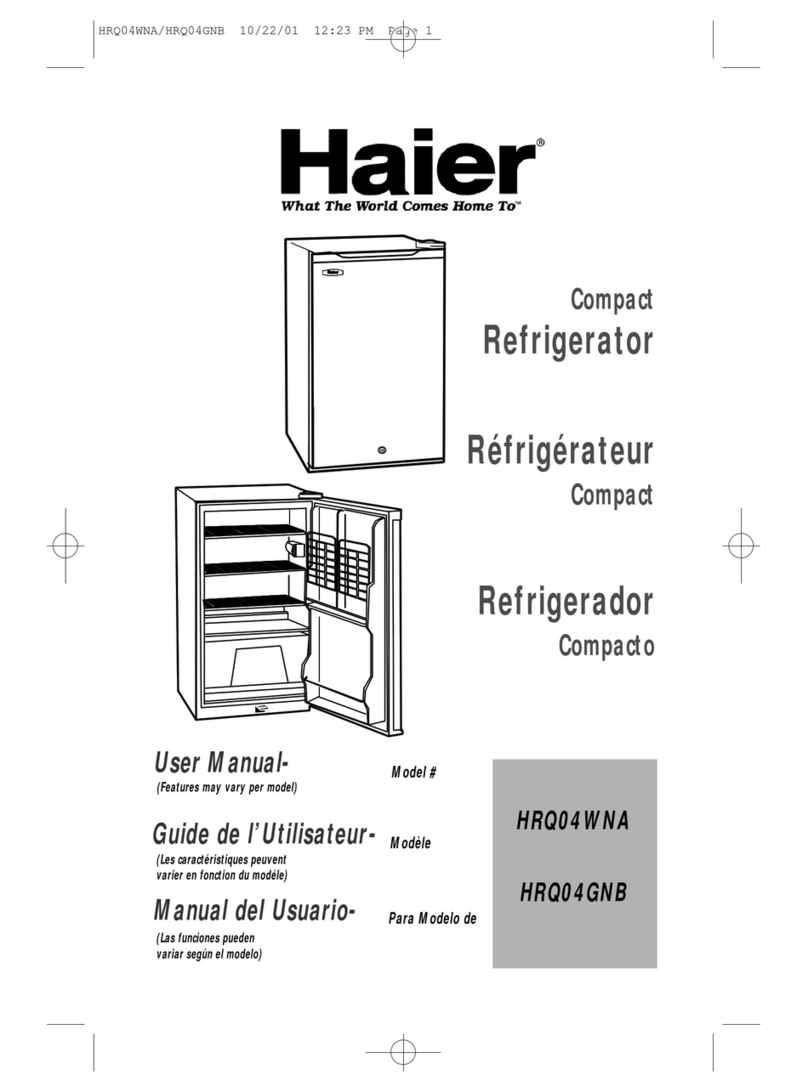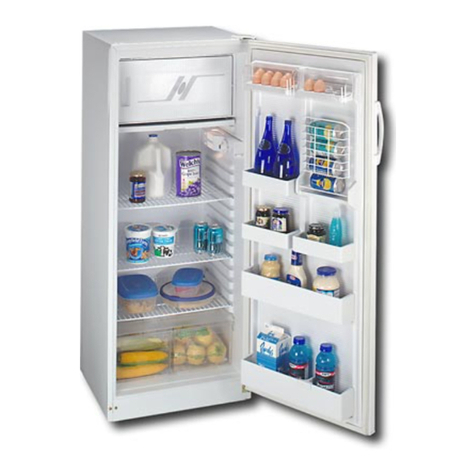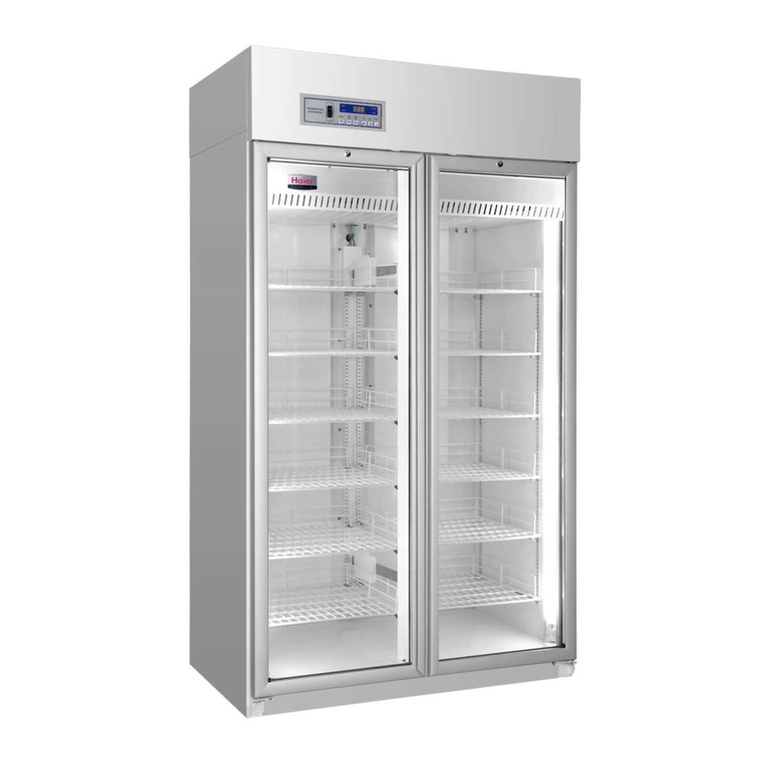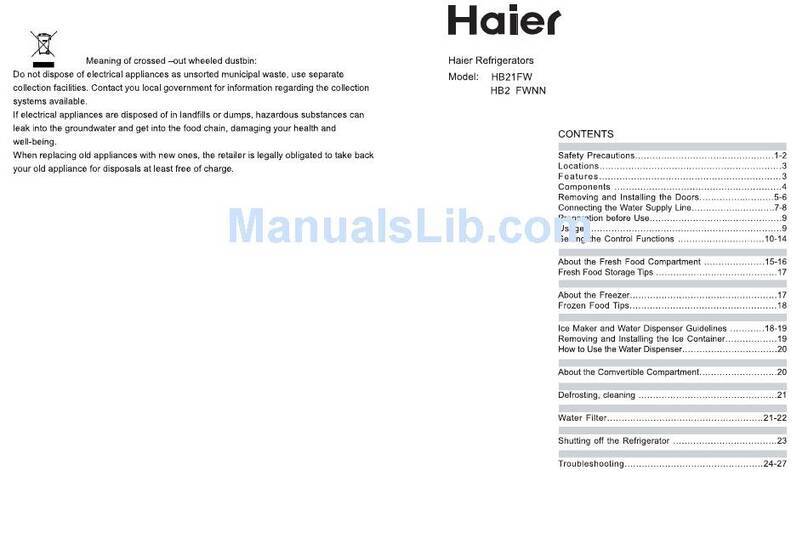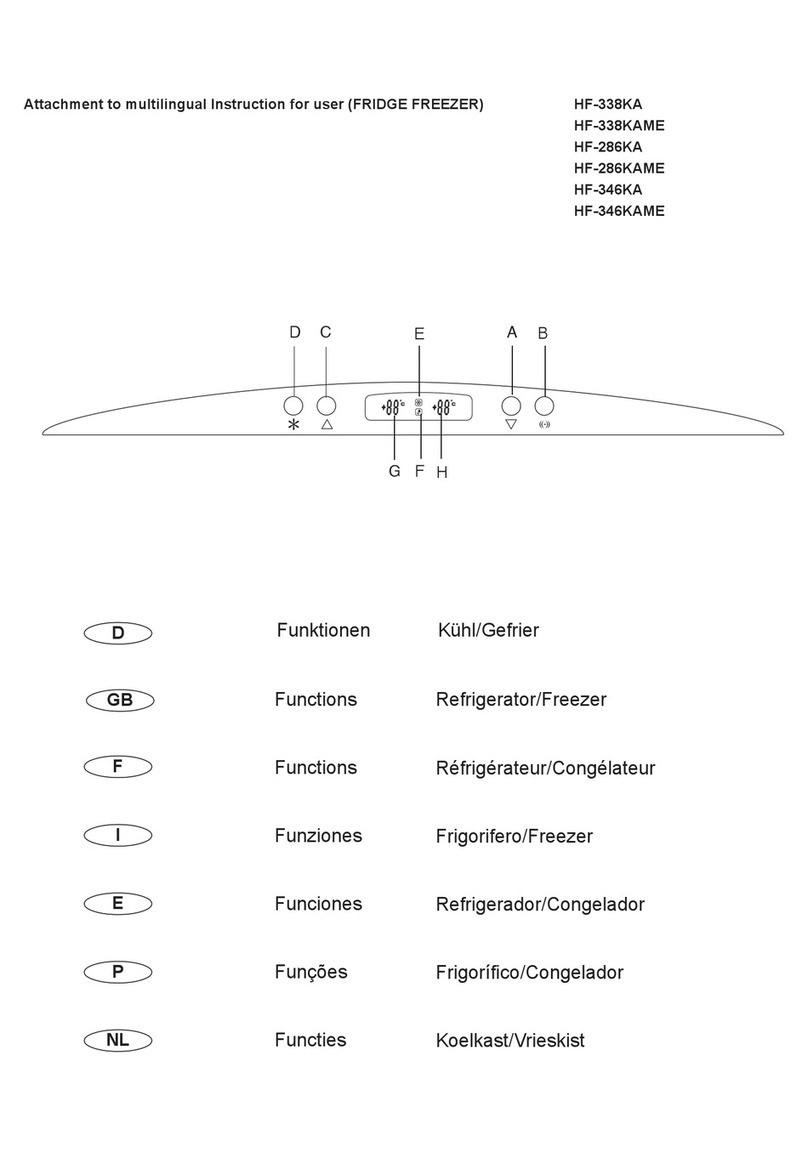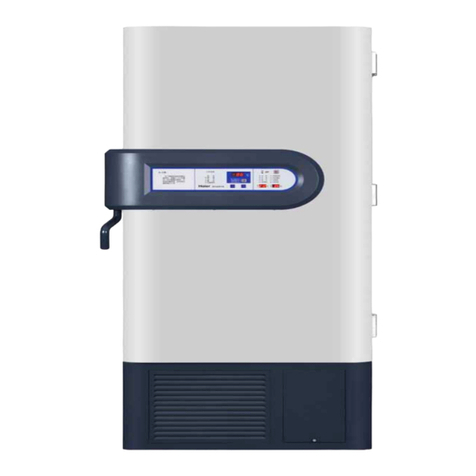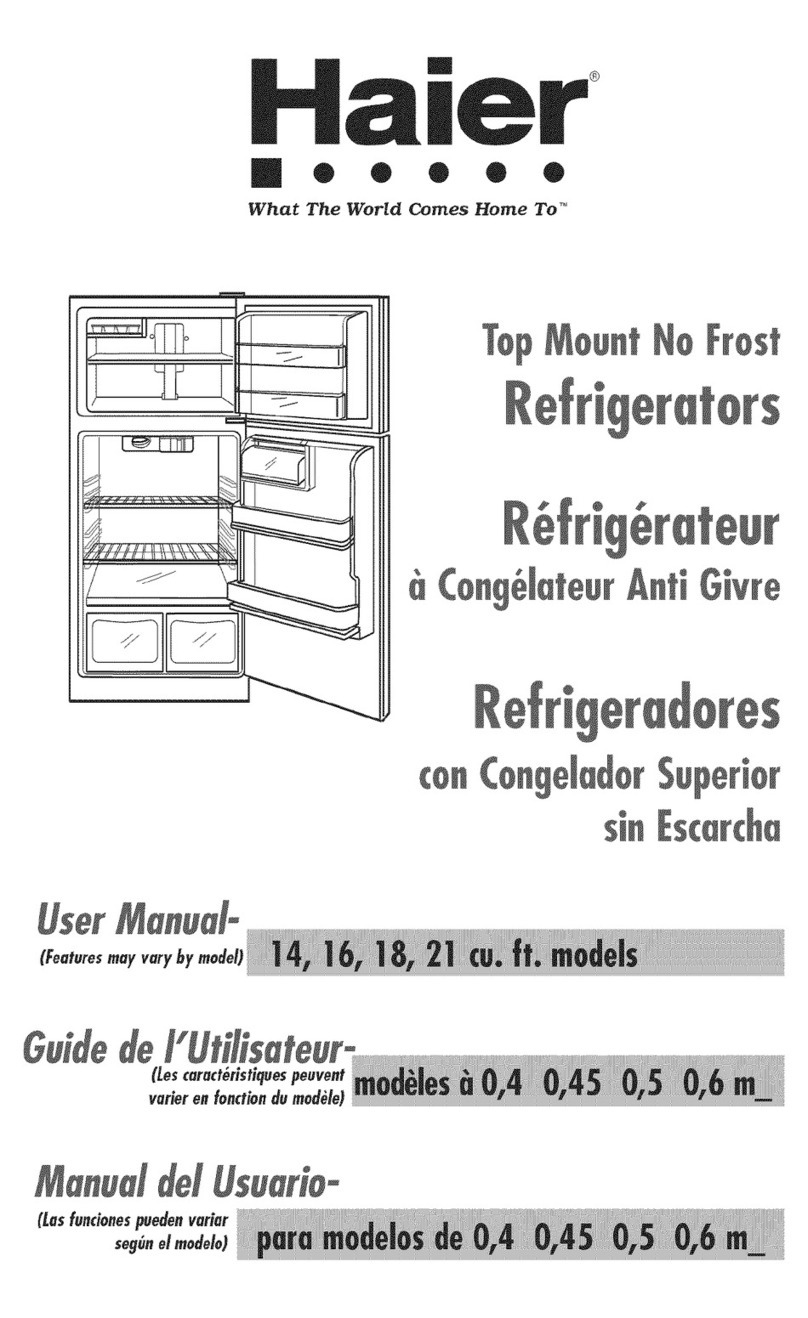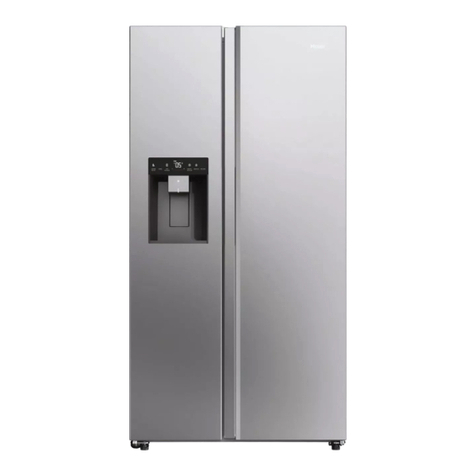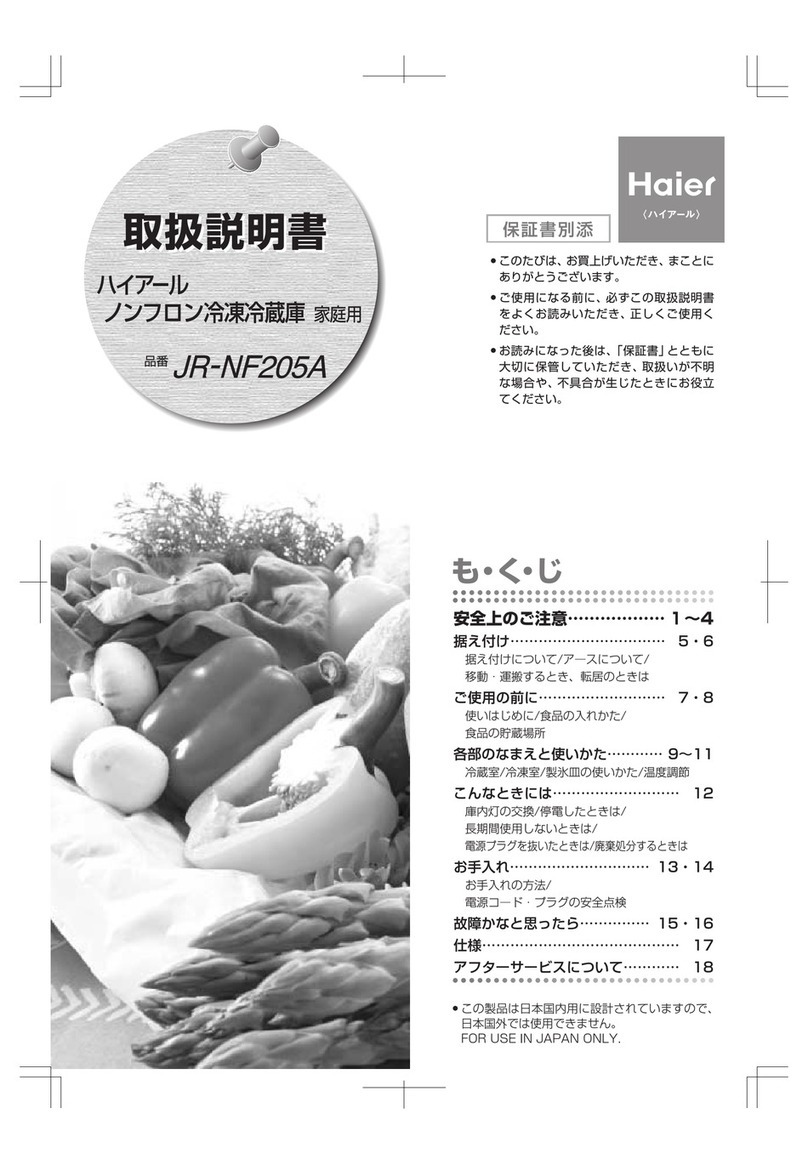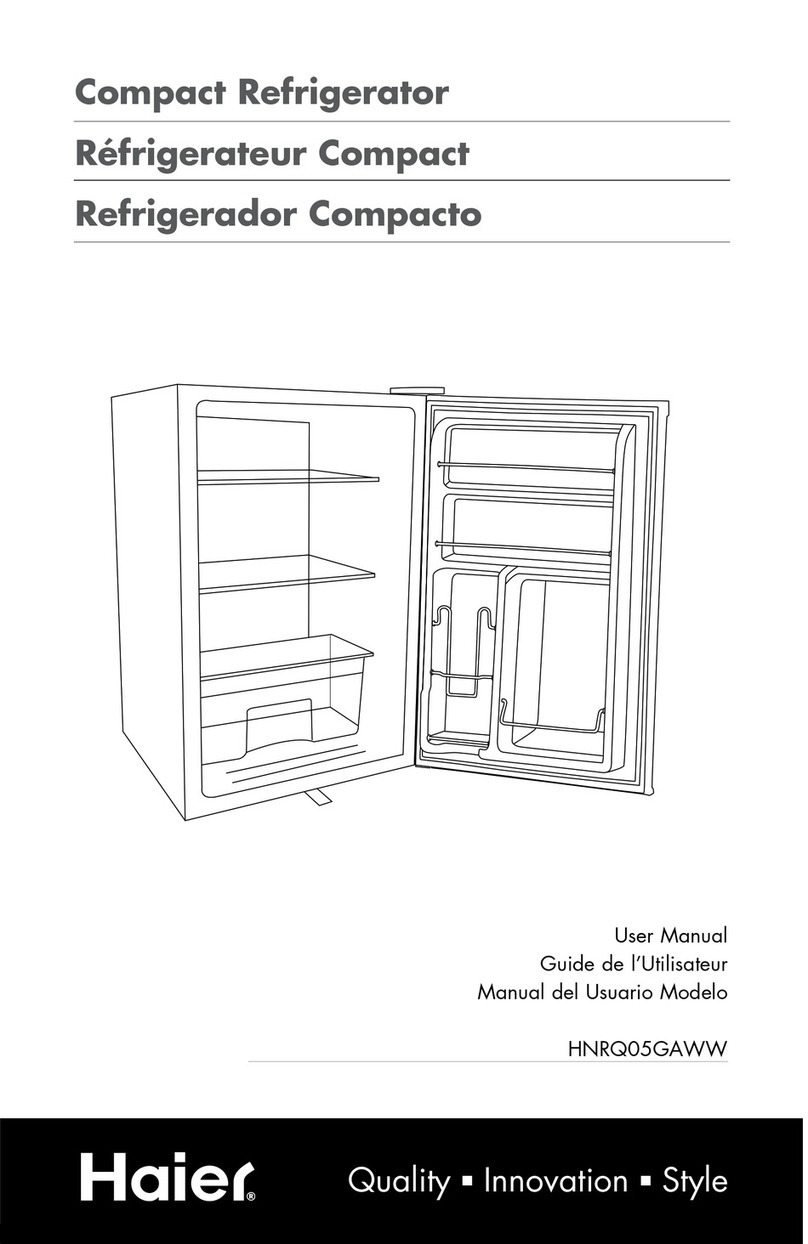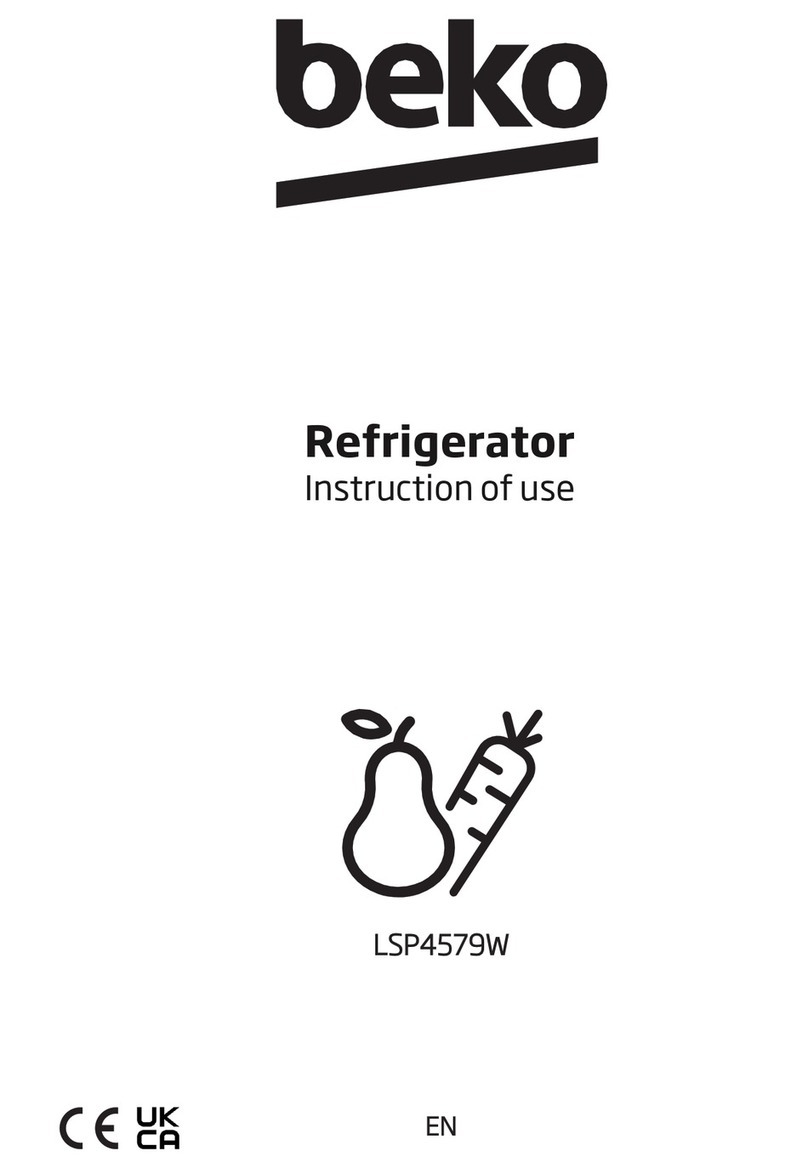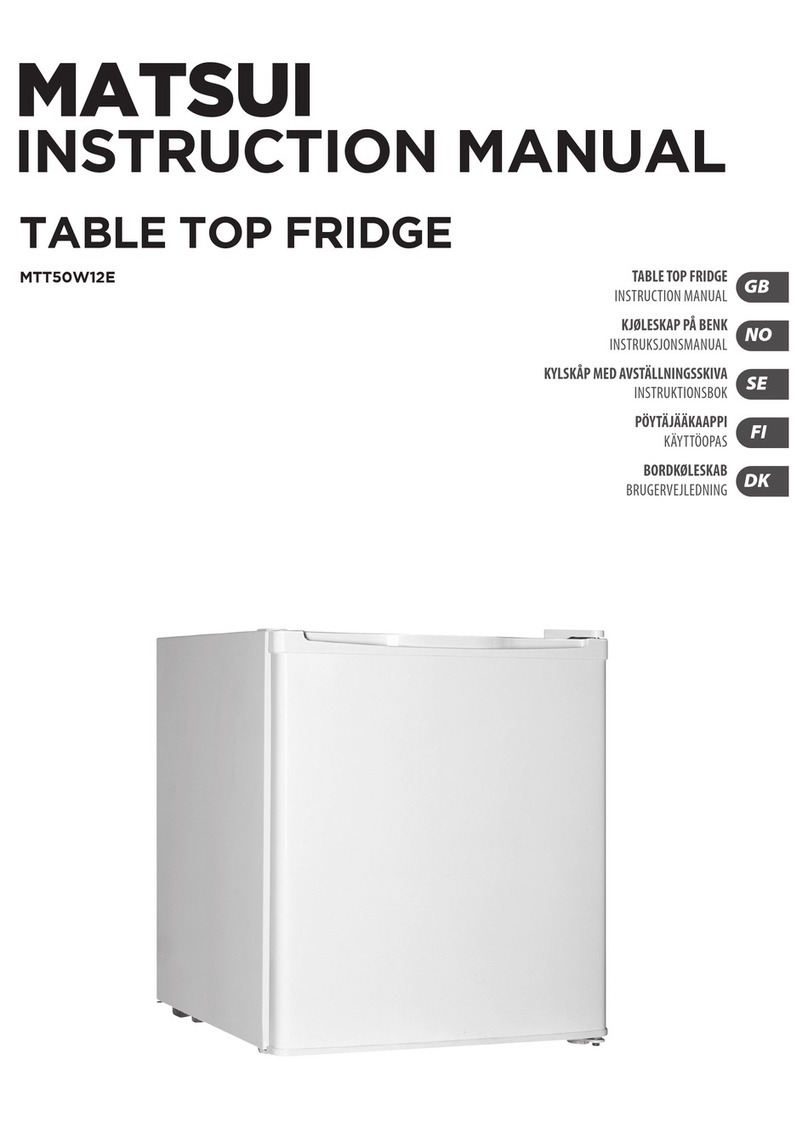
6
• Ambient temperature: 16 ℃ to 32 ℃, the range of 18 ℃ to 25 ℃ is optimal. Air conditioning system
is required as necessary.
• Ambient humidity: below 85%RH.
• Avoid excessive dust.
• Avoid mechanical vibration.
• The refrigerator shall operate at an altitude lower than 2000m.
• Input voltage: no greater than ±10% of rated voltage.
• Indoor use.
The installation site shall meet following requirements for normal operation and best performance of
refrigerator:
• Do not install the refrigerator in a narrow and confi ned space as heat may be trapped to increase
ambient temperature. Additionally, the unit should not be installed in a space where the entry door
way is low to prevent an easy maneuver of the unit for maintenance and operation.
• The fl oor for the installation site should be solid and fl at. It should also be well ventilated and free
from direct sunshine.
• The power outlet for the refrigerator must be a dedicated power outlet. The power plug must be
plugged in to the outlet securely.
• Do not twist or jam the power cord.
• If the power cord needs to be extended, the cross section area of the conductor in the extended line
should be no less than 2 squared millimeters and no longer than 3 meter.
• Inspect the operating voltage range before operation. If the voltage supply is unstable, install a
voltage stabilizer of 4000 W or greater to ensure the supply voltage is within 10% of the rated voltage
supply.
• The refrigerator must be grounded reliably.
• Check the integrity of the socket ground before power up. If it is not grounded appropriately, repair
the wiring before installing the unit.
• Do not ground the refrigerator through gas lines, water lines, telephone lines, or lighting rods as
these devices may cause electric shock and danger.
• As the refrigerator is sensitive to the environmental temperature. The heating box
can not operate normally if it is installed in an environment other than the above.
Please use it after improving the environment.
• It is prohibited to install the refrigerator in the open air environment. When the
refrigerator gets wet in the rainwater, leakage of electricity or electric shock accidents
may possibly be caused.
Product Installation
Installation environment
Installation site
Caution
19
FAQ
If you have any questions about the operation of the refrigerator, please refer
to the table frequent asked questions as follows. Call Haier technical support
if you still have questions. Do not attempt to maintain or dismantle the unit by
yourselves.
Fault Troubleshooting
The refrigerator
does not work
Inspect the power supply to make sure it meets the requirement.
Inspect the connection between the power plug and the socket.
Check the power cord for any obvious damage.
Whether the voltage is too low
The refrigeration
eff ect is weak
and temperature
exceeds upper
limit.
The unit is loaded with too much warm sample and product.
There is a lack of space between stored samples.
There might be a direct sunlight or other heat radiation energy on the
refrigerator.
The door is opened too frequently.
Ambient temperature is too high.
Air duct is blocked.
Unit seems to
emit too much
noise.
Check the installation of the unit to make sure the unit does sit on a solid fl oor
without vibration.
Part of the refrigerator leans against a wall.
As a reference, the published sound data is obtained at specifi c laboratory
condition. It is normal that the actual sound level in the fi eld diff ers due to
subtle installation and operation conditions.
Alarm light
fl ashes and
alarm buzzer
sounds
Warm products have been placed into the unit recently and the refrigerator
has not stabilized yet at 2℃ to 8℃. The alarm condition will be automatically
corrected once the temperature reaches the set value.
The door is not closed properly.
The unit lost power recently and it is in the process of cooling down.
Ambient temperature might exceed the designed range.
